Forget hugs and kisses. Throw away your candy, flowers and rings. If you want to truly express love for someone, clean their ears.
A Mimisouji Love Story?
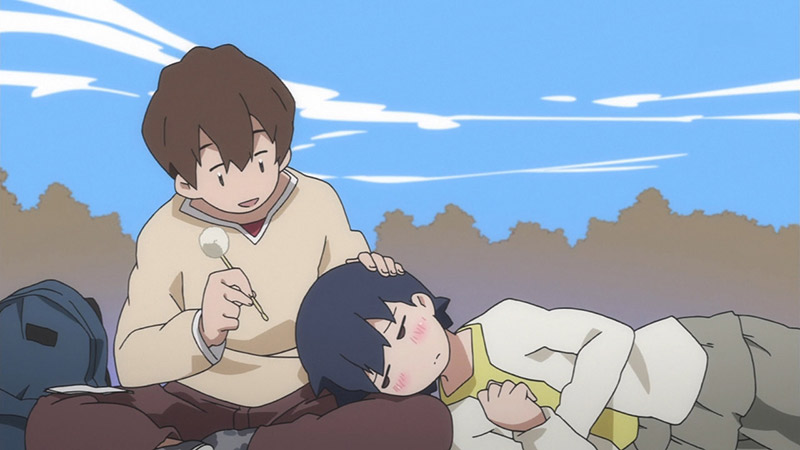
Perhaps you’ve seen it in anime, manga, drama or movies. Or maybe you’re one of the (un)lucky ones to have experienced it yourself. In Japan it’s common imagery – a blissful man rests his head on the lap of a woman who takes a long, pointy tool and picks (called mimikaki), pulls, or wipes the excess earwax out.
How romantic.
However, ear cleaning, or mimi souji 耳掃除 isn’t limited to romantic interests. Family members might also get in on the act. Hitome Kobayashi, associate professor of otorhinolaryngology at Showa University School of Medicine explains, “Many Japanese grew up having their ears cleaned by their mothers, and associate it with pleasant feelings of maternal closeness.”
How did such a rudimentary cleaning routine come to embody intimacy? Few areas of the human body are as important yet as vulnerable as the human ear. Even a pressure change during air travel can rupture the delicate human eardrum. So it’s no wonder any physical contact with the ear’s organs should be avoided. Luckily they sit deep inside our heads, protected by the outer ear, pinna, and (sometimes hairy) ear canal.
You wouldn’t let any Jo-suke Schmo off the street poke around in your ears, would you? Of course not. Only the most trusted people should be allowed access to this vital, vulnerable area – particularly when it involves long, pointy objects. In an ideal world no one would be more trusted than one’s parents or lover(s). So ear-cleaning as a symbol of love kind of makes sense.
Or A Horror Movie?

But to the (un)trained eye the scene appears more fitting of a horror film. Ear cleaning tools resemble a dentist’s ensemble at best, medieval torture devices at worst. When I first witnessed the act my muscles tensed and my forehead broke into a cold sweat! I couldn’t escape the thought that a only small slip would cause major damage.
And I’m not the only worried Westerner. Andrew R. of Oita Prefecture wrote of his culture shock, “Imagine my horror when I came home one evening to find my Japanese wife bent over our little son, about to thrust a sharpened stick into his ear!”
So if the act appears (and is) dangerous, why do it? A cotton swab or a towel over my finger always the job done for me. Are all of these tools really necessary?
Turns out they might be – not all earwaxes are created equal.
Earwax Nomenclature
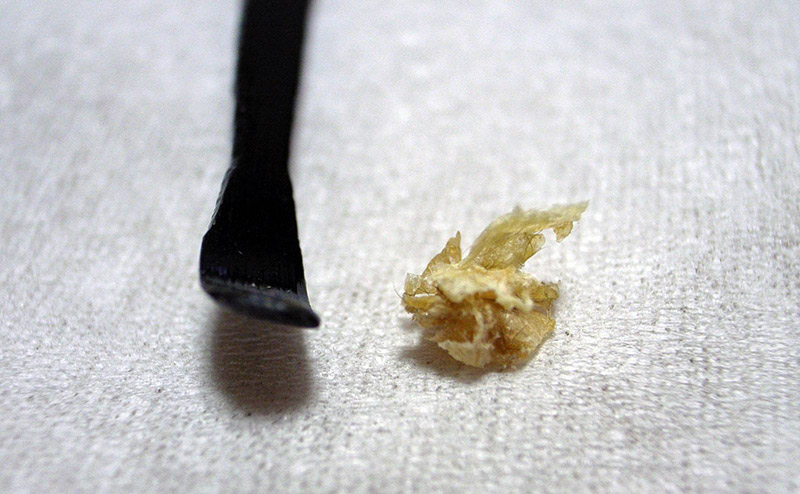
There are two basic types of earwax. Genetics determines which type you have, but it’s also connected to race.
Erika Engelhaupt of sciencenews.org reported on earwax research performed at Monell Chemical Senses Center in Philadelphia. “‘We could obtain information about a person’s ethnicity simply by looking in his ears,’ chemist Katharine Prokop-Prigge said. If you would describe yourself as white or black, your earwax is probably yellow and sticky. If you are East Asian or Native American, it’s likely to be dry and white.”
It appears that earwax type and underarm odor might share a connection. “As for our different ear odors, they came about because of a tiny change… that long ago granted an East Asian population a reprieve from both smelly underarms and sticky earwax.”
Why study earwax? Researchers hope to create an earwax test, similar to blood or urine tests, that would indicate health problems a patient might have.
Understanding earwax types allows us to understand the differences in ear cleaning cultures. Although my sticky earwax adheres to a cotton swab or towel, the “dry, flaky” earwax common among Japanese people doesn’t. This warrants the mimikaki, scoops, shovels and picks that pick and pull the dry, flaky earwax out. And considering the tools, having a partner perform the act seems seems safer than performing it alone.
Mimikaki Tools of the Trade

Whatever the reasoning, when it comes to ear-cleaning in Japan a simple cotton-swab won’t do. Ladles, loops, disks, picks and ear rakes line hygiene aisles. Ear cleaning tools, or mimikaki 耳かき come in plastic, wood, and even silver and gold models.
Some mimikaki have puffs at the end to help pull wax out or brush it aside. Others have safety guards to prevent picks held by unsteady hands from entering too far.
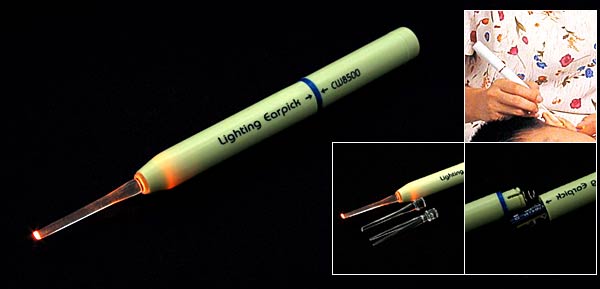
The most technological models use LED lights to illuminate ear canal, making it easier to see. Some models even feature figurines for style. So Hello Kitty fans, for example, can reap extra satisfaction by cleaning their ears with an official Kitty-chan mimikaki.
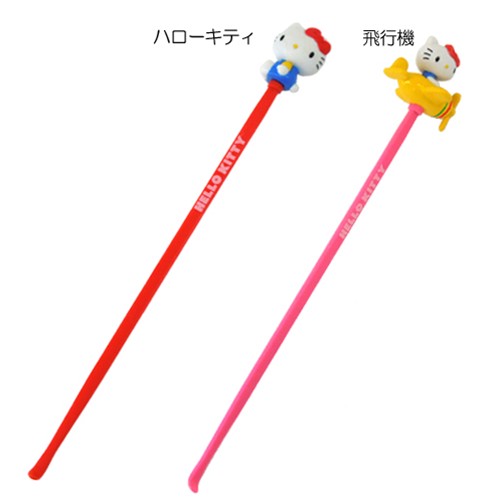
If you’re single, don’t worry. Just because your love-life suffers doesn’t mean your ears have to. Daniel Krieger of TravelCNN reports, “When the Japanese government… (made) medical licenses unnecessary for ear cleaners, a new type of business sprung up in Tokyo and other big cities: ear-cleaning parlors, which now number in the hundreds.” Mr. Krieger purchased the hospitality of a “kimono-clad young woman,” tea, conversation, and the intimacy of a private ear cleaning for about $30.
Women with waxy build-up need not fret. “Though most Japanese ear-cleaning parlors cater more to men who may long for the maternal tenderness of their childhood, female-oriented salons have been appearing,” Mr. Krieger explained.
And if your love for mimi souji has grown into a fetish, there are parlors that cater to your needs as well. The Australian reported on the workers at a parlor called Tenshi no Tobira (Angel Gateway), “a job description that falls somewhere between beautician, unobtainable sex fantasy, and psychotherapist.” At these “discount versions of the traditional hostess bars” a cute member of the opposite sex cleans a customers ears while providing pleasant conversation and, according to an AFP News report, blowing their ears clean.
A few ear-cleaning parlors provide even more thorough, less innocent cleaning services. According to The Tokyo Reporter, “Mimi Kaki Club charged a heady 20,000 yen (about $200) for a 60-minute session, of which only the first 10 minutes involved ear-reaming.” If you’re having trouble imagining what followed mimi souji please read the article, but be forewarned that it includes adult language and strong sexuality. And please remember this type of mimi souji is the exception, not the rule.
But even improved ear cleaning technology and strong-lunged workers can’t hide the truth – most experts agree ear cleaning is unnecessary.
A Sound Argument Against Ear Cleaning

Wet or dry, earwax serves a noble purpose. Alice Gordenker explains, “(Earwax is) there to protect the skin of the ear canal and keep out things you wouldn’t want in your ear, including bacteria, water and (bugs).”
Doctor Timothy C. Hain of american-hearing.org agrees, “One should realize that wax isn’t all that bad. It keeps your ear dry and helps prevent infection. Thus, you don’t want to eliminate wax.”
Perhaps my eyes didn’t deceive me. Maybe we should all tense up at the though of earwax removal – be it by mimikaki, finger, cotton-swab, pick, rake, or scoop. The act appears dangerous because it is. Even the innocent-looking cotton-swab causes its share of injuries. Rose Eveleth of Smithsonian Magazine explains, “Removing wax yourself can be dangerous… Thousands of people go to the hospital every year because of those pesky cotton swabs.”
Besides, ears are self-cleaning by design. Ross Pomeroy of RealClearScience explains, “‘(Excess wax) falls out of the ear without us noticing.’ Much of this cascade occurs while we eat. The movement of the jaw massages wax out of the ear canal. Along with the wax comes any particulates or dirt that were gumming up the hearing works.”
But what about waxy buildup? Surely some situations call for the physical removal of wax, right? Professor Kobayashi suggests that “there are times when ear wax has to be removed, but it should be always be handled by a medical professional.”
“If someone experiences symptoms such as pain, discharge, a sense of fullness or hearing loss,” Professor Kobayashi continued, “they should go to a doctor who has training and special tools.”
Is That Waxy Buildup In Your Ears, Or Are You Just Happy To Hear Me?
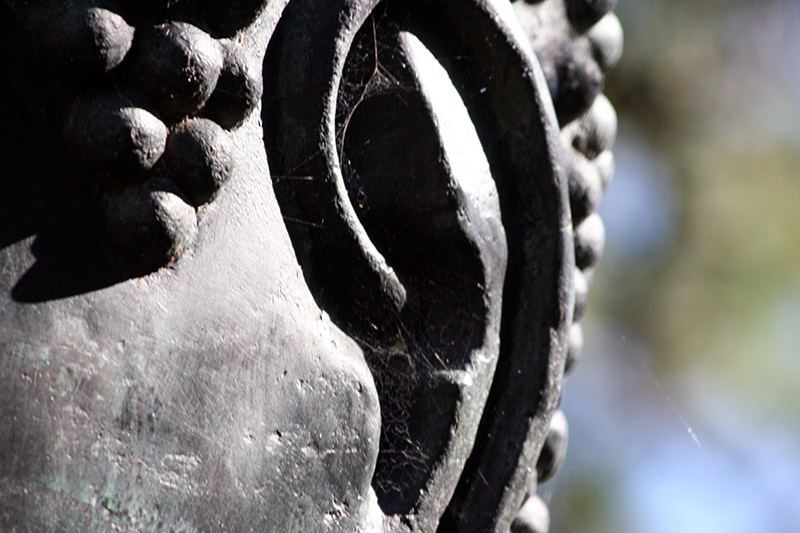
“Remember, never stick anything smaller than your elbow in your ears,” an elementary school teacher of mine once said.
“My elbow’s too big to fit in my ear!” a classmate called out.
“Exactly!” He said with a smile. Though I couldn’t maneuver my elbow anywhere near my ear to try, the teacher had made his point – don’t stick anything in your ears.
And health professionals agree, cleaning one’s ears is unnecessary and often does more harm than good. Self cleaning can lead to deeper wax buildup, infections, and damage to the inner ear. And thanks to natural mechanisms, ears clean themselves. So is it really worth the risk?
Some people think so. In many countries ear cleaning has become a hygienic ritual. This is especially true in Japan, a culture that prides itself on cleanliness. But mimi souji supercedes hygiene. Many consider the act a pleasurable, comforting experience that embodies love and trust.
Mii-chan, an ear cleaning parlor girl concluded, “The ear is a very sensitive place and, when someone is cleaning it, you feel loved.”
